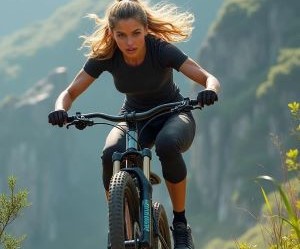Learn how to choose between clipless and flat pedals by comparing efficiency, control, comfort, and riding style to find the right setup for your needs.
HOW SHOULD I TREAT AERO VS WEIGHT TRADE-OFFS WHEN PRICING FLAT VS ALPINE STAGES?
Cyclists and analysts often debate the importance of aerodynamics versus weight. On flat stages, aero efficiency can save massive energy over long distances, while in alpine stages, weight savings can determine climbing speed. For those evaluating equipment choices or even modeling performance for betting and analytics, understanding these trade-offs is essential. This article breaks down how aero and weight impact flat versus alpine stages, explores the science behind each factor, and offers practical guidance for applying these principles in real-world scenarios.

Understanding aero vs weight
Aerodynamics and weight are two of the most important performance variables in cycling. Their relevance shifts depending on terrain, gradient, and race dynamics. Evaluating how each factor contributes allows riders, teams, and analysts to optimize equipment and strategy.
Aerodynamics on the flats
On flat terrain, aerodynamic drag accounts for up to 80–90% of resistance at racing speeds. Reducing frontal area, using aero frames and wheels, or wearing optimized clothing has a far greater impact on efficiency than cutting a few hundred grams from bike weight. Over a 200 km stage, saving 10 watts through aero gains can translate into minutes of energy conservation or decisive sprint advantages.
Weight on the climbs
On alpine climbs, gravity dominates. Each kilogram matters, especially on gradients above 7%. A lighter bike and rider system translates directly into watts saved per kilo. Unlike flats, where momentum helps sustain speed, climbing penalizes excess weight linearly. However, too much focus on weight at the expense of stiffness or aerodynamics can backfire in mixed terrain stages.
Flats: Aerodynamics dominate, weight is secondary.
Climbs: Weight savings matter more, but aero still plays a role at higher speeds.
The key is balance: real races rarely consist of pure flat or pure alpine terrain, so the trade-off depends on the stage profile.
Applying trade-offs by stage
When pricing or evaluating stage performance, the aero vs weight trade-off shifts with the terrain profile and tactical context. Flat sprint stages, hilly breakaway days, and alpine mountain finishes all reward different equipment and strategies.
Flat stages
On pancake-flat routes, aerodynamics are king. Lightweight climbing bikes bring minimal advantage, while aero bikes, deep-section wheels, and skinsuits yield tangible time and energy savings. For betting or modeling, prioritize riders with sprinting power, strong lead-outs, and aero efficiency. A rider carrying an extra kilogram is unlikely to suffer compared to one sacrificing aero gains.
Mixed and rolling terrain
On undulating stages, the trade-off is more complex. Aero still plays a role on descents and flats, while weight influences repeated short climbs. Analysts often model these scenarios using power-to-weight ratios for climbs combined with aerodynamic CdA for flats. Equipment choices here usually aim for balanced setups—mid-depth wheels and all-round frames.
Alpine stages
In high mountain stages, weight becomes paramount. Climbers riding featherweight bikes and minimizing excess equipment gain advantages on steep gradients. That said, modern WorldTour teams often still optimize aerodynamics for valleys and descents within mountain stages. Betting models should heavily weigh power-to-weight ratios but not ignore aero positioning in mixed segments of the race.
Flat stages: Aero dominates performance outcomes.
Rolling stages: Balanced aero-weight trade-offs matter.
Alpine stages: Weight drives climbing, aero matters in transitions.
Strategic insights and future trends
Understanding aero vs weight trade-offs isn’t just about bikes—it influences betting markets, team strategies, and even how cycling evolves. The balance continues to shift as technology advances and race speeds increase.
Betting and analytics perspective
For those pricing stages, focusing on rider physiology, equipment, and team strategies aligned with terrain yields better predictions. In flat stages, sprinters backed by aero setups gain favor. In alpine stages, lightweight climbers with proven watts per kilo take precedence. Mixed terrain requires nuanced analysis of all-rounders who balance both traits.
Technology and performance
Bike manufacturers increasingly design frames that balance aero and lightweight qualities, closing the gap between the two extremes. Advances in carbon layups, wheel profiles, and clothing aerodynamics mean riders no longer have to choose strictly between aero and weight. This trend will impact future betting and modeling by reducing trade-off extremes.
Holistic approach
Ultimately, aero vs weight decisions must be stage-specific, rider-specific, and context-specific. Weather, altitude, wind direction, and team roles all affect outcomes. The smartest approach is treating aero and weight not as opposites but as complementary levers to optimize performance depending on conditions.
In conclusion, treating aero vs weight trade-offs for flat versus alpine stages requires both scientific understanding and contextual awareness. On the flats, aero dominates; in the high mountains, weight prevails. But in modern cycling, where marginal gains decide victories, the most successful riders and teams know how to balance both—giving them the edge in betting models, performance analytics, and real-world results.
YOU MAY ALSO BE INTERESTED






